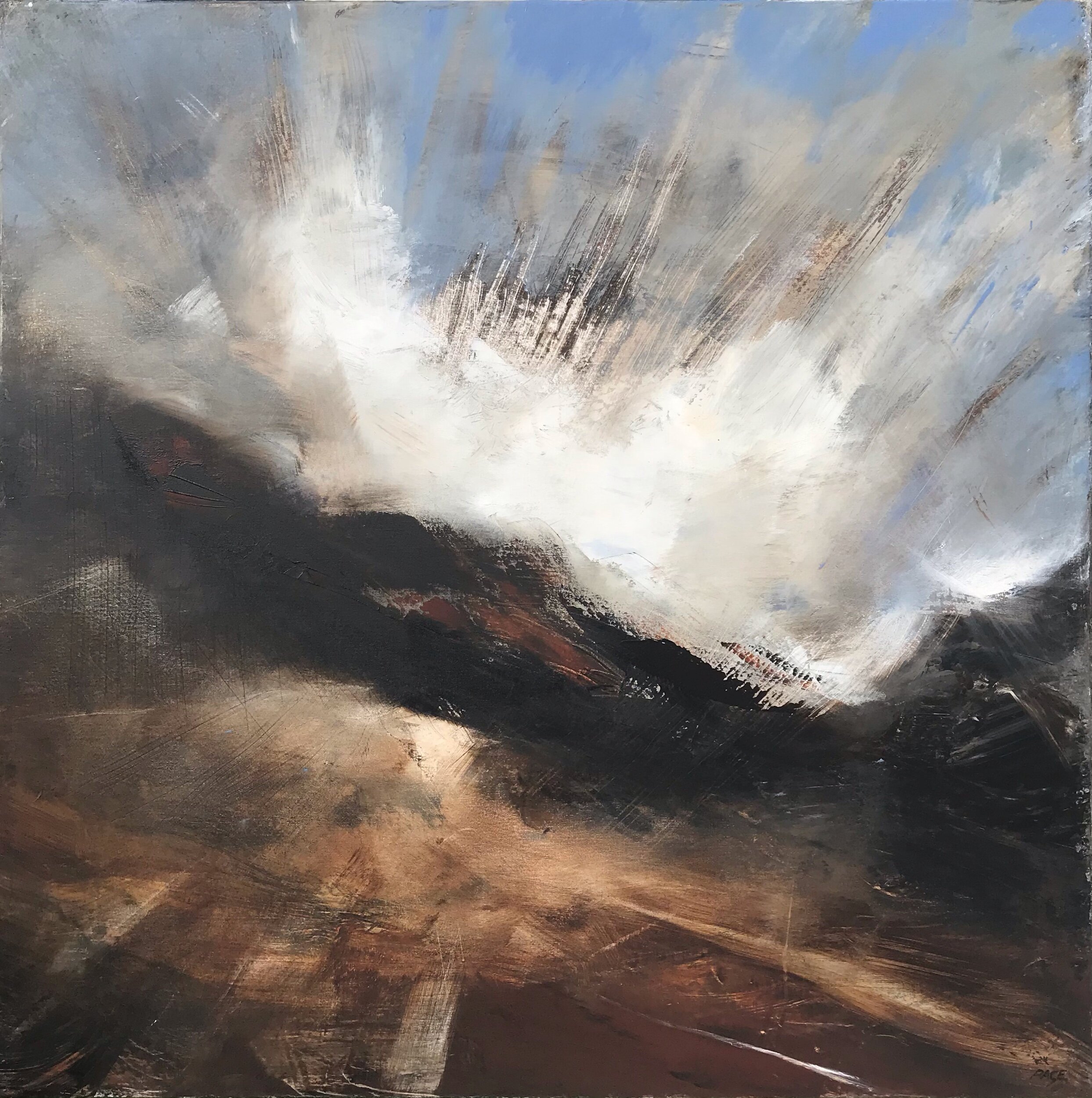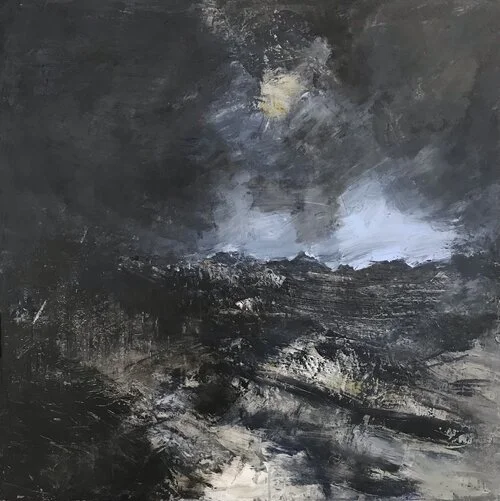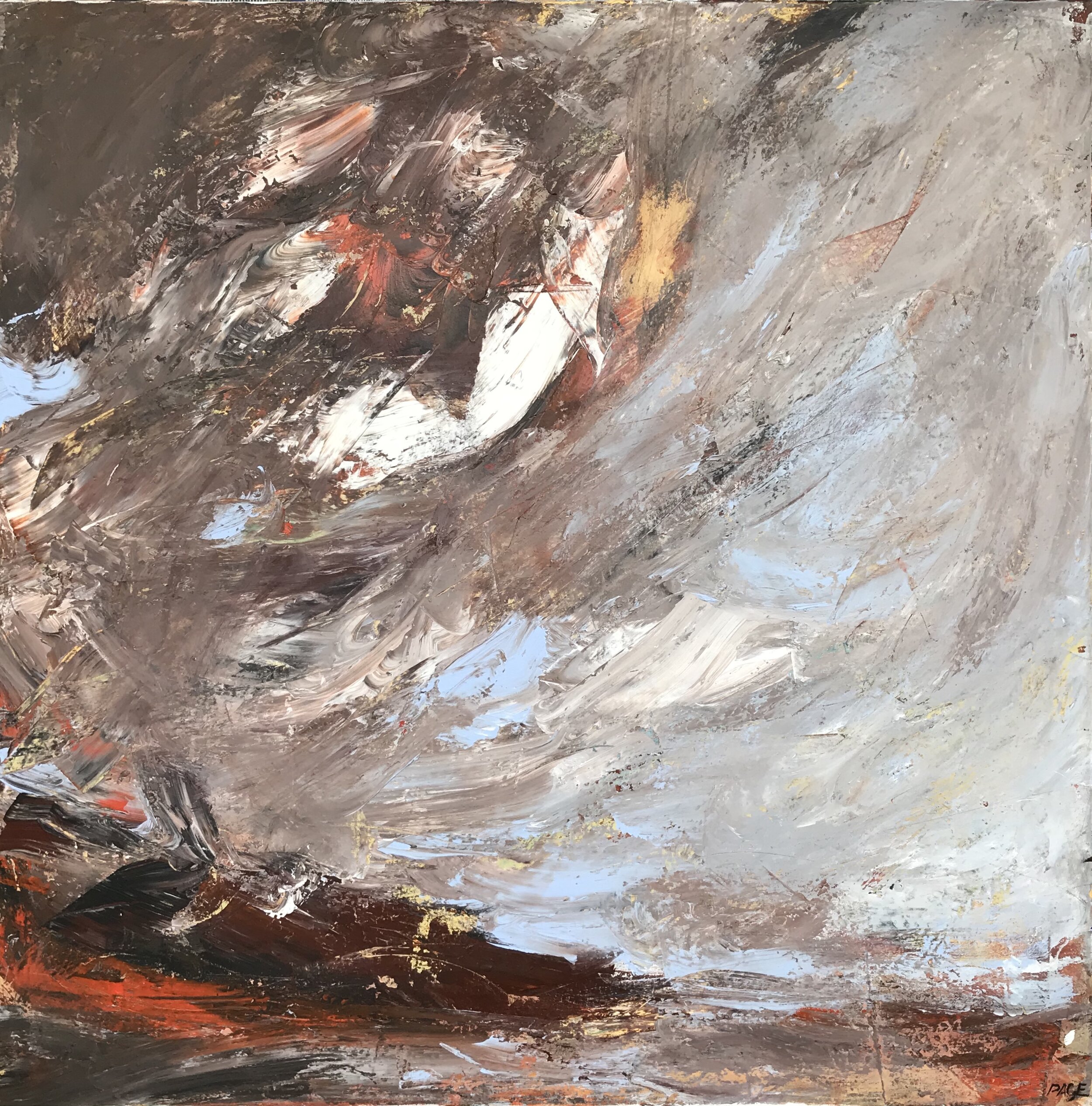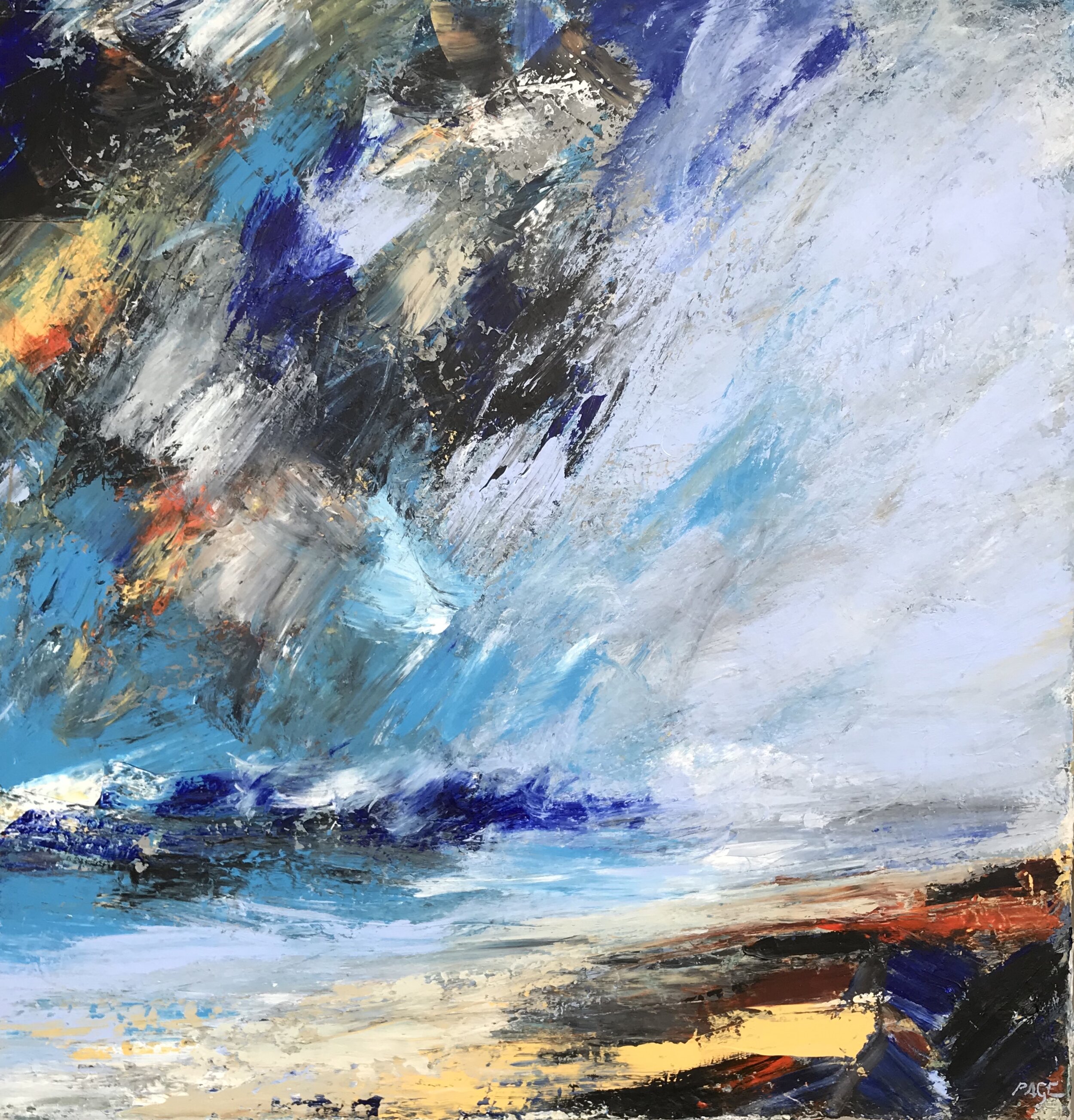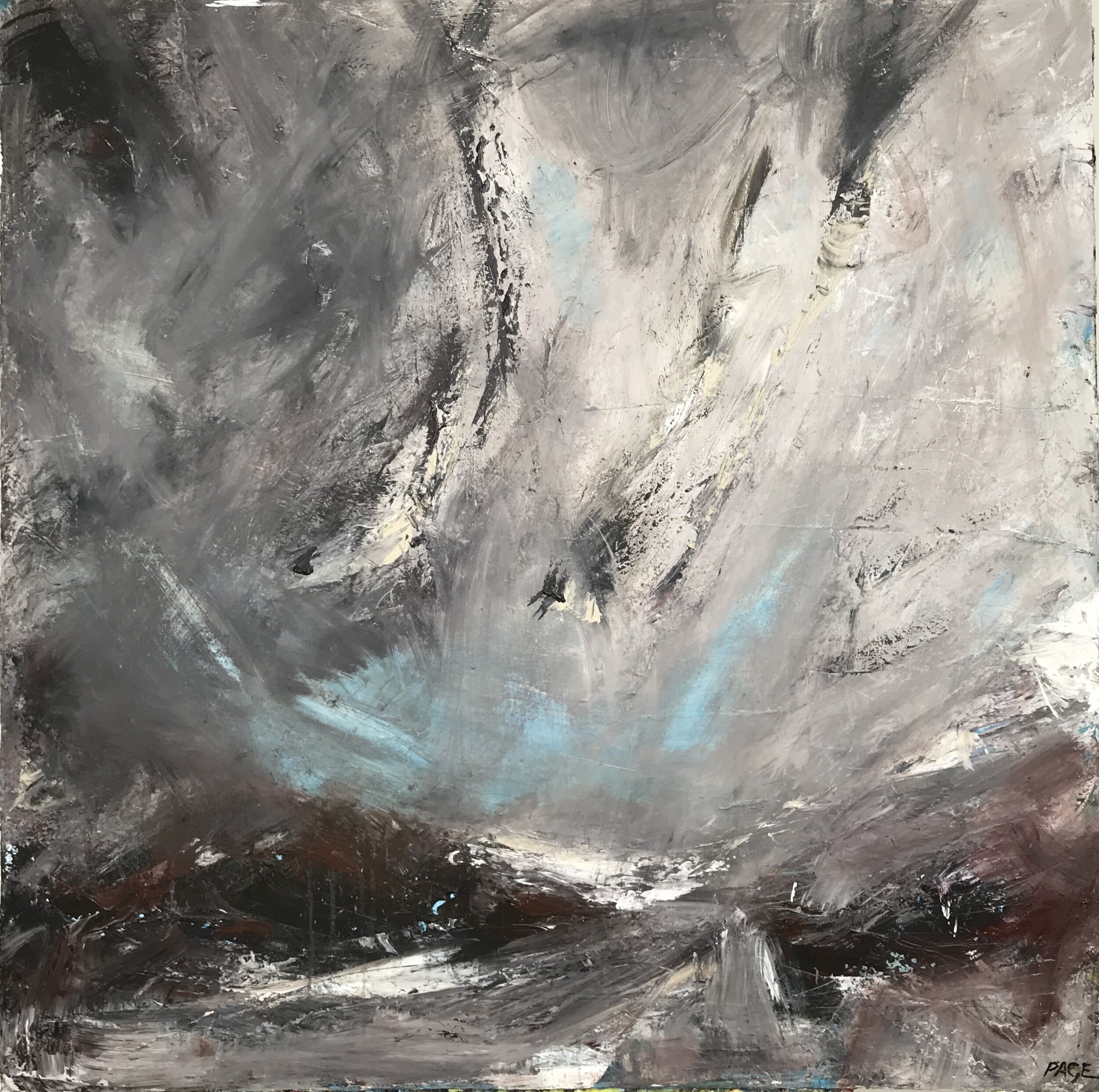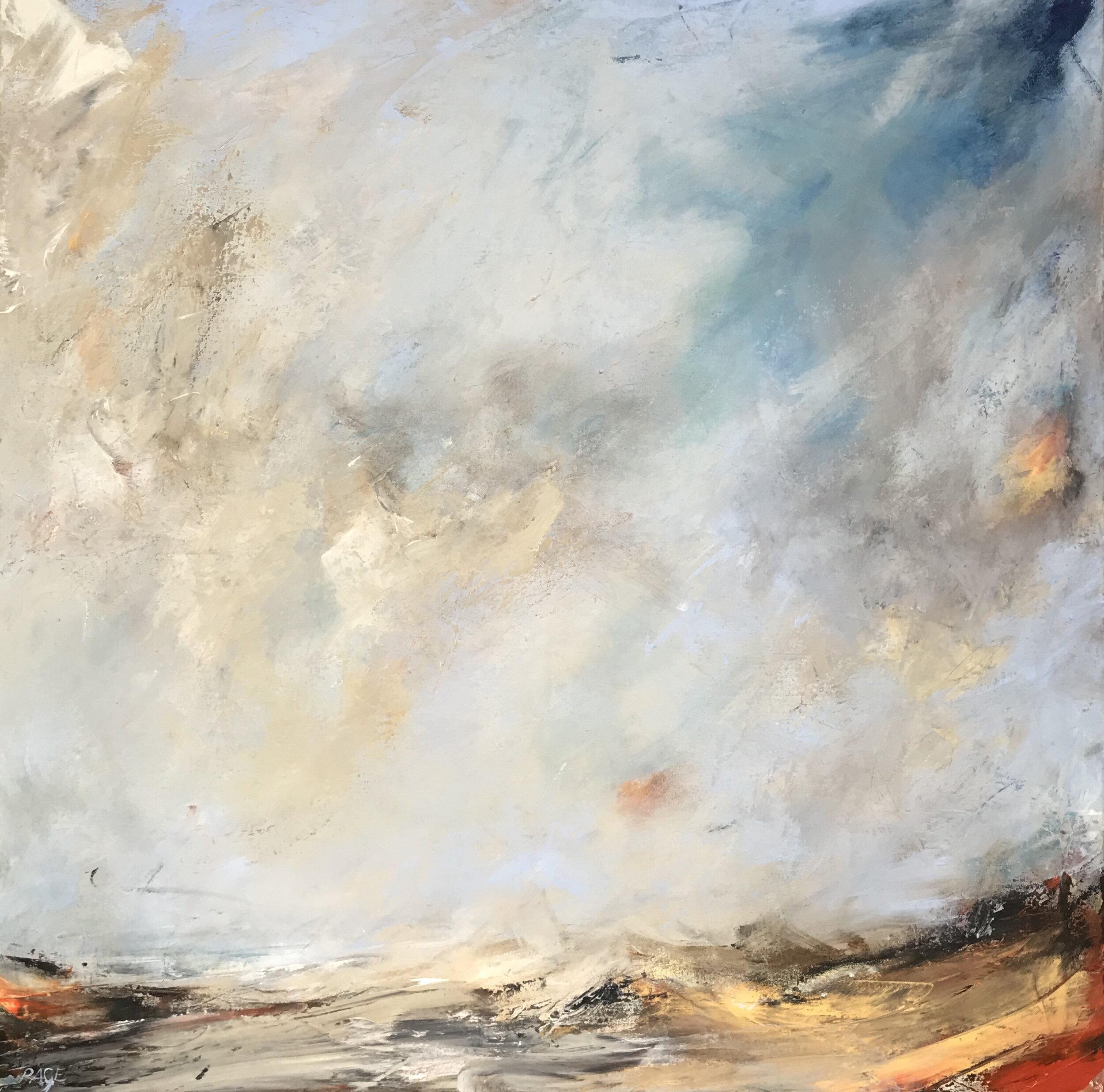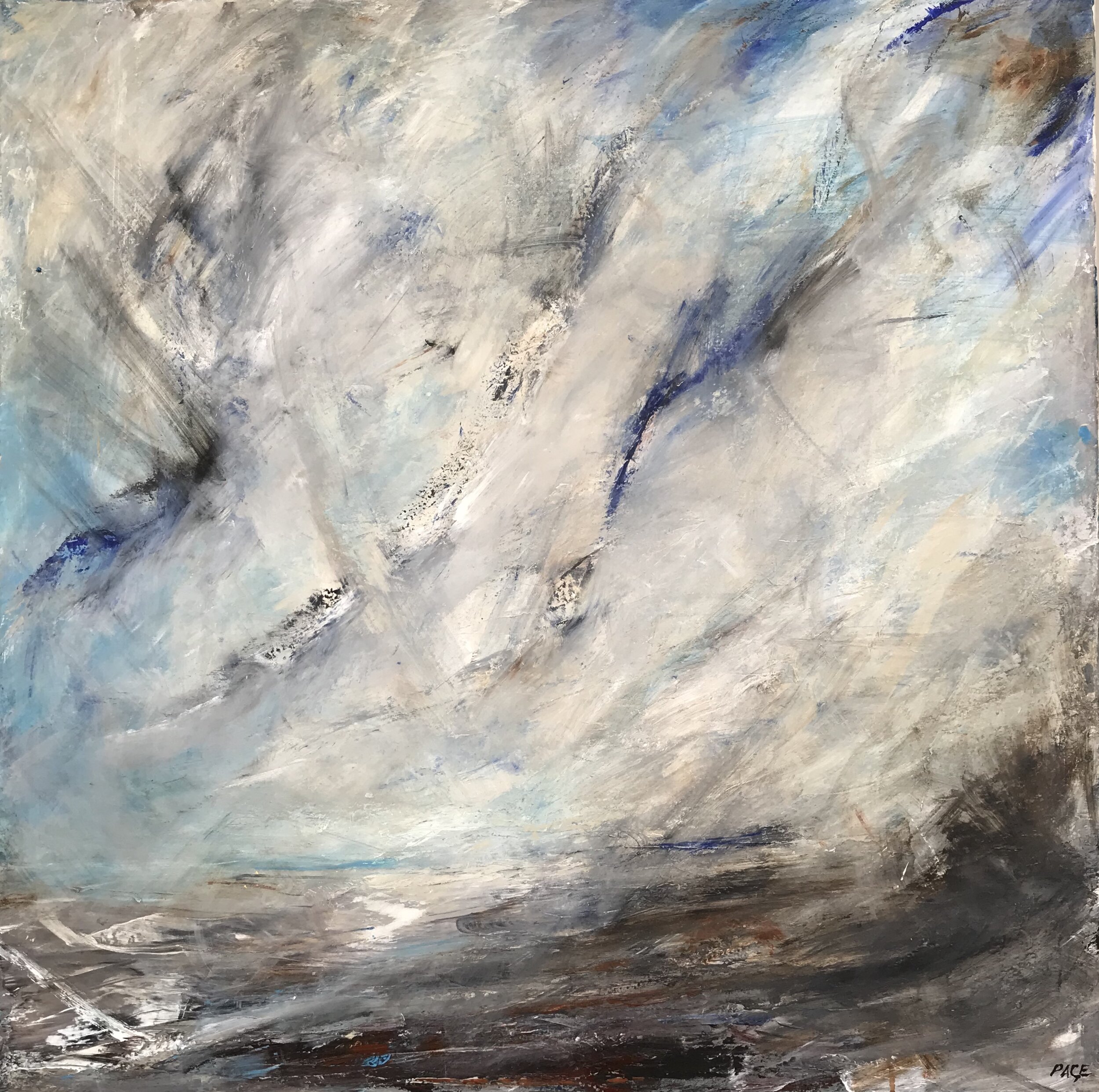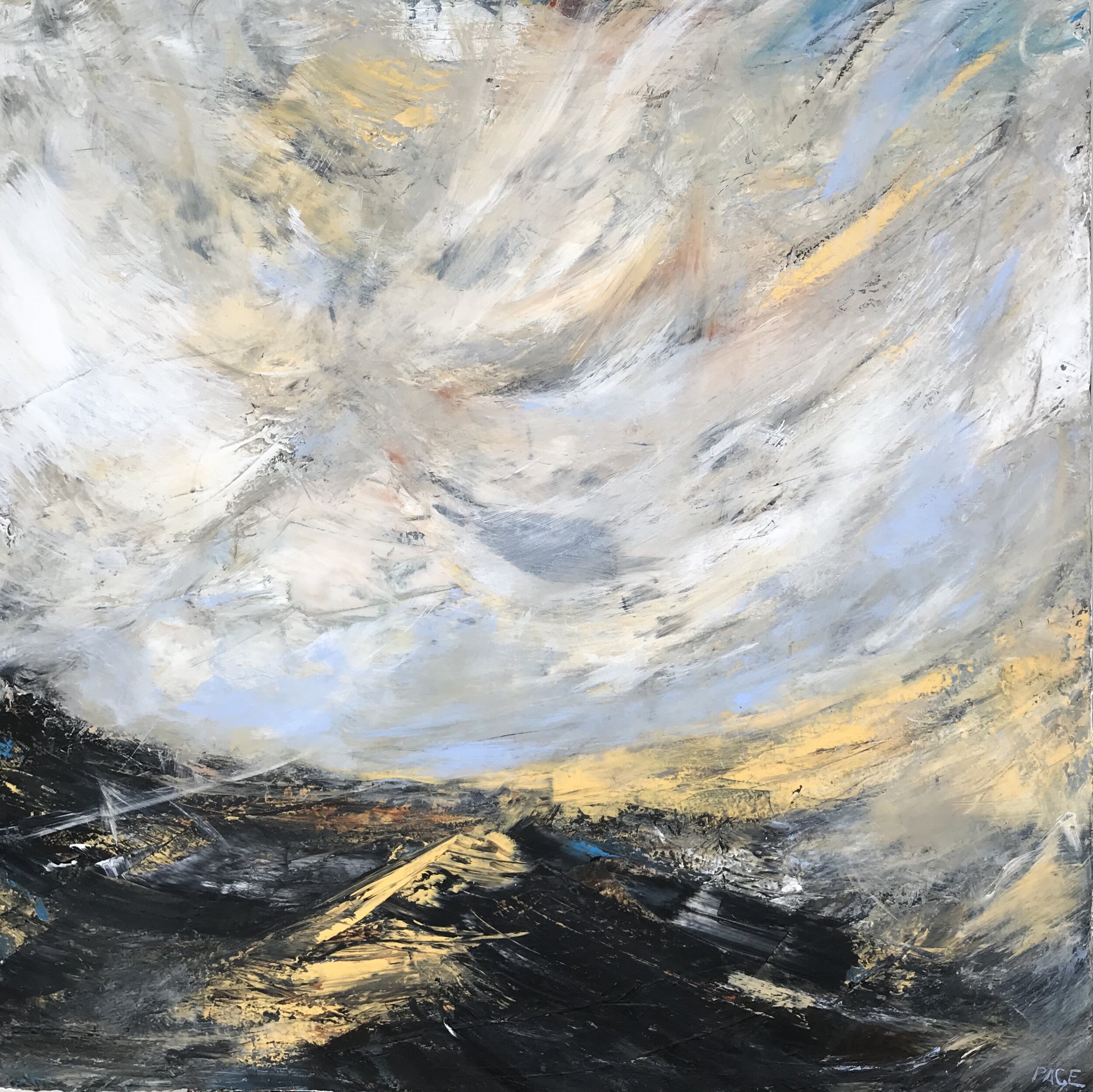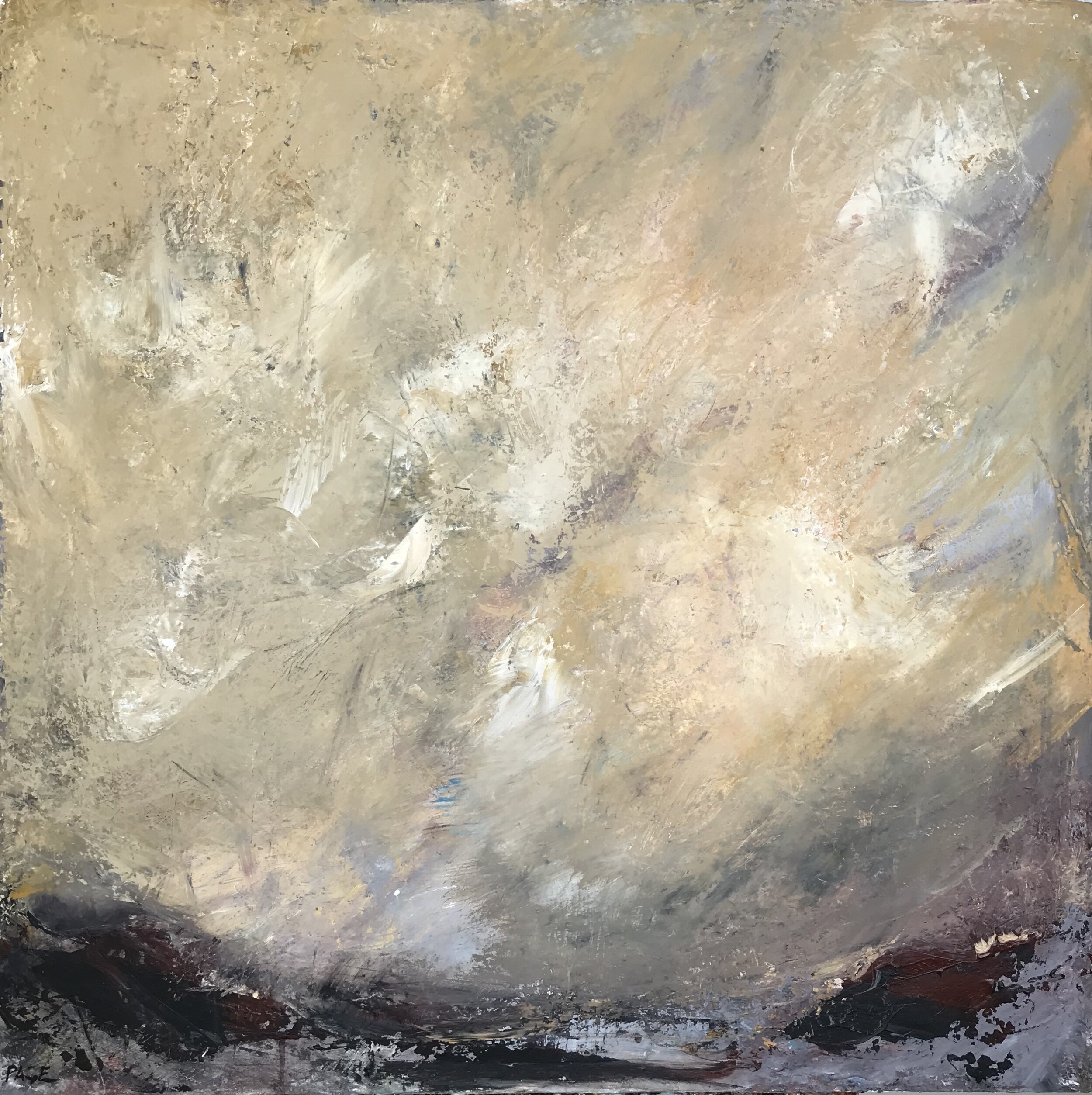I am delighted the Highland Colours show of work has moved to the City Contemporary Art Gallery in Perth for December and January. The ideas behind the pictures explore the colours of the the Highlands as seen through the eyes of Gaelic place-names.
25th November 2023 - 14th January 2024
I have a deep affection for the Scottish mountains, whether walking their slopes or simply observing them from a distance. Their dynamic nature, shaped by weather, time of day, and seasons, imprints a distinct identity upon the landscape, rendering the surrounding places unforgettable. My artistic pursuit revolves around encapsulating this paradoxical essence—of enduring presence entwined with ephemeral change—within my paintings.
The vistas we perceive—the contours, textures, and silhouettes, veiled by atmospheric nuances—are outcomes of ancient geological processes: tectonic shifts, volcanic activity, and glacial shaping, spanning millennia, as outlined by McKirdy, Gordon, and Crofts in 'Land of Mountain and Flood'. These forces, coupled with subsequent erosion, sedimentation, plant growth, and decay, conspire to craft the canvas of our landscapes.
In painting, or reimagining, these landforms the intention is not to record a set moment in time, but rather to mirror and emulate the processes that created the landscape in the first place but this time with paint. In as many imagined processes as possible, I layer, pour, throw, and spread the paint, followed by soaking and repeating the process. This intricate cycle involves scraping back through layers to varying depths, occasionally to the canvas's origin, revealing hints of diverse colours and textures. The unearthed masses and granules are then redistributed across the canvas. Through soaking or hosing, the canvas is primed for the next step, where softened residues find new locations amidst added drips, sponging, scouring, and sandpapering. This dynamic composition is further textured by dabbing with cloth and applying, then removing, drying sheets from the surfaces.
Yet all the time I am watching for the moment when it works, when the chaotic energy leaves a mark that resembles places visited or experienced, around which the final landscape image can evolve, the relationships between the parts moderated, balanced and composed together with a further layer of atmospheric meteorological chaos. These final conscious moves are an echo of the human hand that has managed our landscapes for the last millennia but now combined with simulated momentary weather effects captured in further swirling motion, drenching, wiping dripping and drying.
Feeding this visual interest and subsequent action are the books describing the feats of climbers scaling these hills and one book in particular caught my interest and shaped the exhibition for this year’s Highland Art show at the Wasps Gallery in the Briggait in Glasgow and now the showing at the CCA in Perth.
'Burn on the Hill' by Elizabeth Allan documents the story of the Reverend Ronald Burn who was the first person to complete all the Munro’s and tops between 1914 and 1926. Whilst born and brought up in Aberdeenshire, he largely accomplished this feat alone from his base in Oxford, taking the train up any holidays he had and walking across country from farmhouse to estate cottage, he thoroughly documented these walks, climbs and stays in detailed diary entries and in his maps.
He was a literary man and it is from these diaries that we get a sense of the subtlety of his observations which range across history, nature, terrain, politics and qualities of experience, in particular one that interests me - colour.
Fionn (white - fair)
1000 x 1000 Acrylic on Canvas
Sold
Dearg (red)
1500 x 1500 Acrylic on Canvas
Sold
An entry from Burn’s diary that described the colours he was seeing in November 1921 recounted, ‘The day was sunny and warm except when a wind sprang up. The colours were lovely. A dark brown on the hills contrasted with the lighter shades near us. The bleak bareness of winter neither of us believes in, and to one that looks about there is plenty of colour.’
In 1923 he observed, ‘there were two kinds of blue clouds, greenish to the west and the usual blue to the east. I have never seen this difference before.’
In 1927 a note stated, ‘The rain was off when I supped, watching a lovely long indigo bank all along Beinn Ghlas under a cap of snowy mist and tawnyish lower slopes.’
His descriptions have a visceral sensitivity. Elizabeth Allan recounts one episode from the 1915 diary, ‘Next morning (June 5th) Ronnie set off to explore the high hills north of the loch: Meallan Rairigidh, as he called it, with its ‘dining saloon’ cairn, then Sgurr Mor, Meall a’ Chrasgaidh and Sgurr nan Clach Geala in that order. He puzzled over the latter name- sharp pointed hill of the white stones - since he could see none, but farther west next day keeper Macrae at the Nest of Fannich pointed out the white stones on that side of the hill, shining in the sun. The bealach to the south was Cadha Dearg Mor - big red pass - and did indeed have red sand.’
Dubh (black)
1200 x 1200 Acrylic on Canvas
Burn’s puzzlement at the meaning of the Gaelic name is not a surprise, he was also a collector of place-names and his diaries document his evenings spent with whoever he stayed with collecting and recording that Local knowledge. Reference is made to him marking his maps with these names and his will bequeathed them to the 'Scottish Mountaineering Club' with the wish 'that those one inch maps with place names added be at the disposal of any map reviser'. They appear to have been lost so we don't know how much of his collection of names has entered the archive of place - names which has been gathered.
In his time, place-name collecting was not a unique activity, a reference earlier in his 1915 walk discusses the merits of what appears to have been a key contemporary source book – W. J. Watson’s ‘Place Names of Ross-shire’ published a number of years earlier. Watson’s introduction identifies what might be termed six base colours integrated into this collection of region specific names, Dubh, Fionn, Glas, Liath, Gorm, and Ruadh.
A century later, this colour compendium of mountain colours was enhanced in a Cambridge University Hillwalking club glossary by Mark Jackson identifying sixteen colours. In 2021, a blog by Sofia Graham called 'Blar Buidhe and Other Colours in Iona Place-names' with a splendid colour chart of place-names identified by the eleven ‘Gaelic’ colours found on Iona. In her blog she referenced Bateman and Purser’s book 'Window to the west: culture and environment in the Scottish Gaidhealtachd', 2020, with their examination of the origins and interpretations of colour.
Riabhach (brindled)
1500 x 1500 Acrylic on Canvas
Glas (grey - green)
1200 x 1200 Acrylic on Canvas
The accumulation of these learnings led to the creation of this exhibition titled 'Highland Colours.' Its conceptual mountain colour chart is derived from names extracted through an analysis of Munro's, Corbett's, Graham's, and Donald's charts, documenting mountains over 3000ft, 2500ft, and 2000ft in the Highlands and Lowlands. Fourteen colours stood out in that review as being associated with mountains and hills in these charts.
Fionn, Dearg, Dubh, Riabhach, Glas and Breac are being shown in ‘The Room’ at the CCA in Perth. These six paintings have been inspired by these Gaelic colour names and, whilst I am not a Gaelic speaker, the collection is a mark of gratitude to the sensibility of generations who crafted these identifying names and to the subsequent scholarship that preserved their significance.
Breac (speckled)
1200 x 1200 Acrylic on Canvas


























